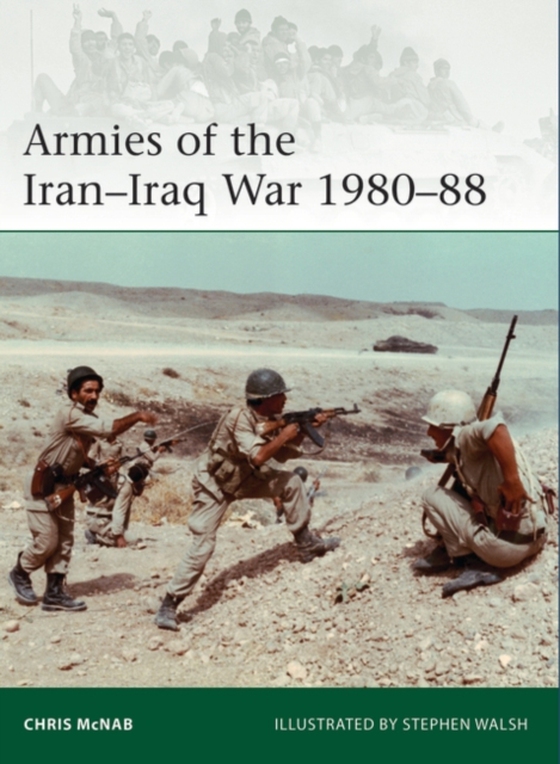
Armies of the Iran Iraq War 1980 88 e-bog
123,90 DKK
(inkl. moms 154,88 DKK)
Driven by the Iranian Revolution of 1979 and the insecurities it provoked in Saddam Hussein's Iraqi dictatorship, the Iran Iraq War would become the largest conventional conflict of the period. Curiously little-known considering its scale and longevity, the struggle between Iran and Iraq was primarily fought along the 1,458km border in a series of battles which, despite both sides being armed w...
E-bog
123,90 DKK
Forlag
Osprey Publishing
Udgivet
20 januar 2022
Længde
64 sider
Genrer
1FBN
Sprog
English
Format
epub
Beskyttelse
LCP
ISBN
9781472845580
Driven by the Iranian Revolution of 1979 and the insecurities it provoked in Saddam Hussein's Iraqi dictatorship, the Iran Iraq War would become the largest conventional conflict of the period. Curiously little-known considering its scale and longevity, the struggle between Iran and Iraq was primarily fought along the 1,458km border in a series of battles which, despite both sides being armed with modern small arms, armour and aircraft, often degenerated into attritional struggles reminiscent of World War I. Such a comparison was underlined by frequent periods of deadlock, the extensive use of trenches by both sides, and the deployment of chemical weapons by Iraq. Fully illustrated with specially commissioned artwork, this study investigates the organization, appearance and equipment of the ground forces of both sides in the Iran Iraq War, including Iraq's Republican Guards and Iran's Pasdaran or Islamic Revolutionary Guard Corps. The war resulted in stalemate with some half a million dead and at least as many wounded. The financial costs incurred in waging such a long and debilitating war were one of the spurs that led Saddam Hussein to invade Kuwait barely two years later, setting in motion one of the defining currents of recent Middle-Eastern history.
 Dansk
Dansk

